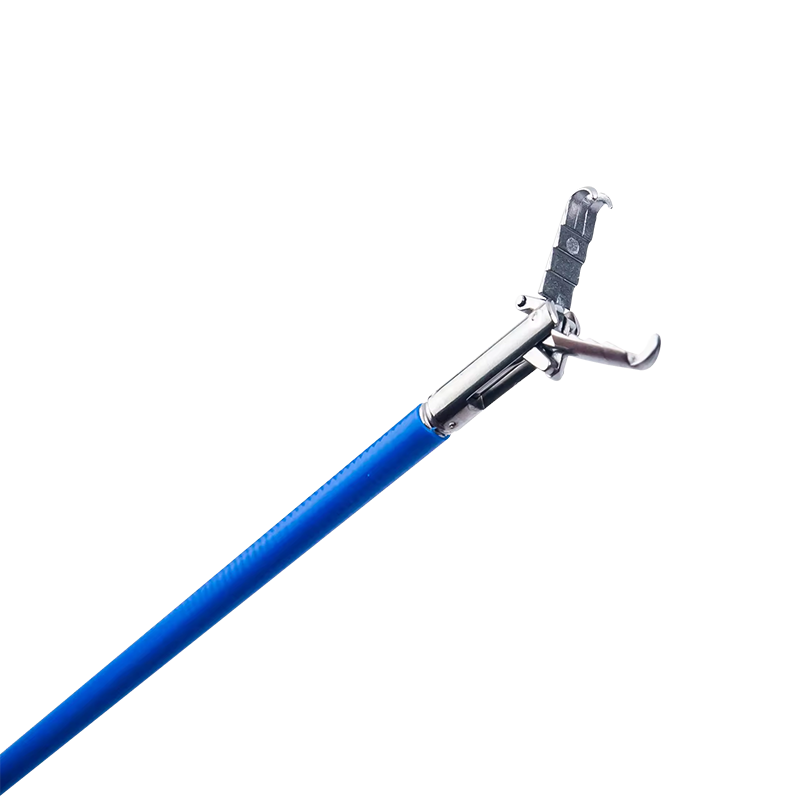UBE surgery: a new method of fusion modulation adjustment
Advantages of UBE surgical special tools in cage implantation
UBE (unilateral dual-channel endoscopic spine surgery) surgery is a minimally invasive spine technology that has emerged in recent years. During the fusion process of this surgery, a series of special tools you mentioned can bring multi-faceted effects to cage implantation. Advantages:
Precise positioning and implantation
Vertically implanting the modulator: In the traditional cage implantation process, there are certain challenges in achieving precise vertical implantation of the cage. Angle deviation may cause poor position of the fusion device and affect the fusion effect. The vertical driving modulation adjuster can precisely control the vertical driving direction of the cage to ensure that the cage enters the intervertebral disc at an ideal vertical angle. This helps the cage fit better and distribute evenly between the intervertebral spaces, creating good conditions for subsequent bone fusion, thus improving the success rate of fusion and reducing the risk of complications caused by improper positioning of the cage.
Angle modulation adjuster: In the complex spinal anatomy, the intervertebral space angles of different patients vary, which requires the ability of the cage implantation angle to be adjusted individually. The angle modulation adjuster can be accurately adjusted according to the patient's specific intervertebral space angle, so that the fusion cage can be implanted at the suitable angle to better fit the physiological shape of the intervertebral space. Compared with traditional methods, this precise angle adjustment can better restore the height and physiological curvature of the intervertebral space, optimize the biomechanical properties of the spine, reduce the patient's postoperative pain, and improve the stability of the spine.
neuroprotection
The "high-heeled shoe structure" of the modulator that protects the nerve roots is an innovative design. Nerve root injury is a serious potential risk during cage implantation. Traditional surgical operations are performed in a small space, making it difficult to protect the nerve roots. The "high-heeled shoe structure" modulator can effectively protect the nerve roots while implanting the fusion device. It can isolate the nerve root from the implantation operation area through a specific structural design, reducing the risk of direct stimulation and damage to the nerve root by surgical instruments. This protective mechanism can reduce the incidence of postoperative neurological dysfunction and improve patients' surgical safety and postoperative quality of life.
Improved surgical efficiency and safety
Reduce surgical difficulty: The use of these special tools simplifies the operation process of cage implantation and reduces the difficulty and complexity of surgical operations. For surgeons, the precise modulation and adjustment function makes the surgical operation more controllable, reduces uncertainty during the operation, and helps improve the smoothness and efficiency of the operation.
Reduce surgical trauma: Precise implantation and neuroprotection measures help reduce tissue damage and bleeding during surgery. Traditional surgery may require extensive tissue dissection and retraction to expose the surgical area, but the application of these special tools makes the surgical operation more minimally invasive, allowing cage implantation to be completed under smaller surgical incisions, reducing damage to surrounding tissues. Reduce the incidence of complications such as postoperative infection and pain, and promote rapid recovery of patients after surgery.
To sum up, these special tools have significant advantages during the UBE surgical cage implantation process, which can improve the accuracy, safety and effectiveness of the surgery, and bring better treatment effects and recovery experience to patients.
Video link address:High heel operation video

 English
English عربى
عربى Español
Español







